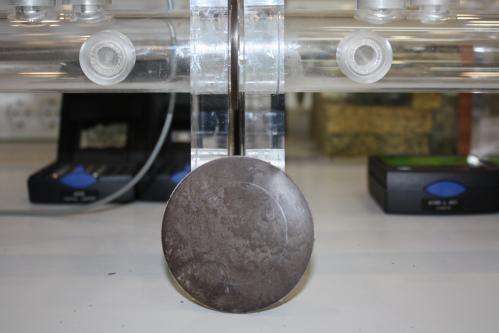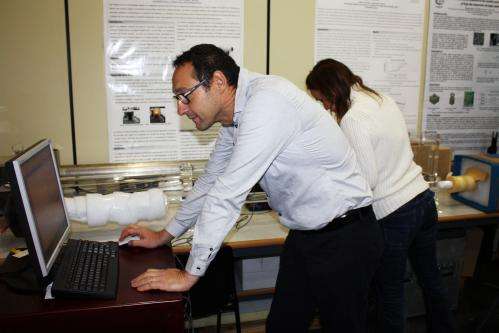Researchers develop a new acoustic insulation material that incorporates fibers from orange tree pruning

Using the fibers from orange tree pruning as an acoustic insulator has been achieved in the laboratory by a team of researchers of the Universitat Politècnica de València and the Universitat de Girona.
As a result of their joint work, the Valencian and Catalan researchers have developed boards that, compared with the conventional gypsum boards, provide a 150% improvement in the acoustic insulation.
The raw material to obtain this new insulating board comes from the classic orange tree pruning, which later undergoes a defibration process. Together with the orange tree fibers, the insulator incorporates polypropylene, a very common plastic found in toys or automobile parts, among other products. Their work was published in the Journal of Construction and Building Materials.
"The boards that we have obtained provide an acoustic insulation potential of about 29 dBA and the conventional laminated gypsum boards are usually at 27 dBA. That difference of 2 dBA is important because it is a 50% improvement in the acoustic efficiency of the boards, in comparison with gypsum boards. If we use a double solution material, that is, a material that incorporates two boards and an absorbent wool in between, like a sandwich, the improvement is about 5 or 6 dBA, which means it will insulate more than double the conventional system", explain Dr. Jesús Alba and Dr. Romina del Rey, researchers at the Campus de Gandia of the Universitat Politècnica de València.
Alba also says these boards meet the objectives defined in the European research programme Horizon 2020, "which focuses on the use of new materials with a natural or recycled raw material. They will replace materials used currently that are more aggressive with the environment", adds the UPV researcher.
In the study, UPV and UdG researchers have analyzed the mechanical properties of the new material, comparing them with those of conventional compound materials. "The mechanical properties are better than those of gypsum boards; this means that with the same board thickness, the acoustic insulation is higher; or that we can reduce the thickness to obtain the same insulation", says Jesús Alba.
According to Dr. Pere Mutjé, Head of the LEPAMAP Group at the Universitat de Girona, "the group has extensive experience in the field of compound materials strengthened with natural fibers. This research is a leading example in the field of the development of the materials commonly known as eco-friendly. In this regard, our research is continuing with ground olive stones and is near completion". Dr. Mutjé says that "the collaboration with the Universitat Politècnica de València is very productive" and "it translates, today, into the manufacture of materials by the Universitat de Girona and their acoustic evaluation by the Universitat Politècnica de València."
Both Dr. Alba and Dr. Mutjé believe that one of the advantages of this new material is that it will enable an agricultural sub-product such as the waste from orange tree pruning to be used, with the resulting economic benefits for the industry.

More information: R. Reixach, R. Del Rey, J. Alba, G. Arbat, F.X. Espinachd, P. Mutjé. "Acoustic properties of agroforestry waste orange pruning fibers reinforced polypropylene composites as an alternative to laminated gypsum boards." Construction and Building Materials. Volume 77. DOI: 10.1016/j.conbuildmat.2014.12.041
Provided by Asociacion RUVID





















